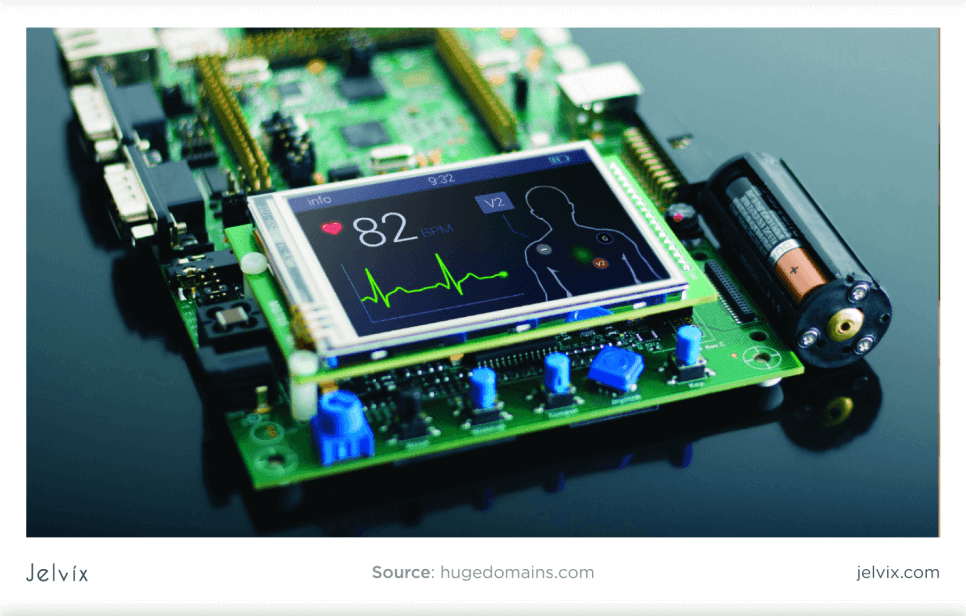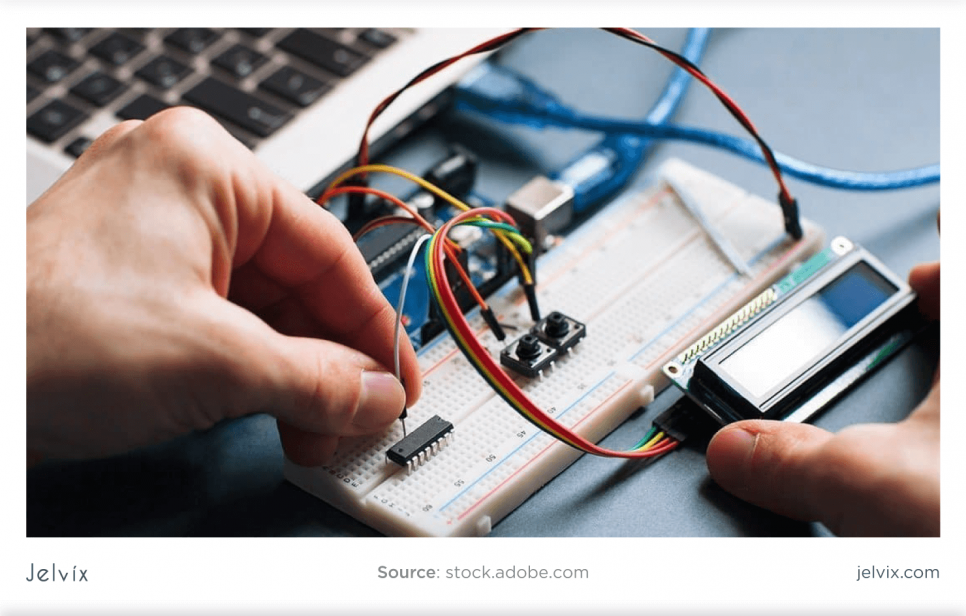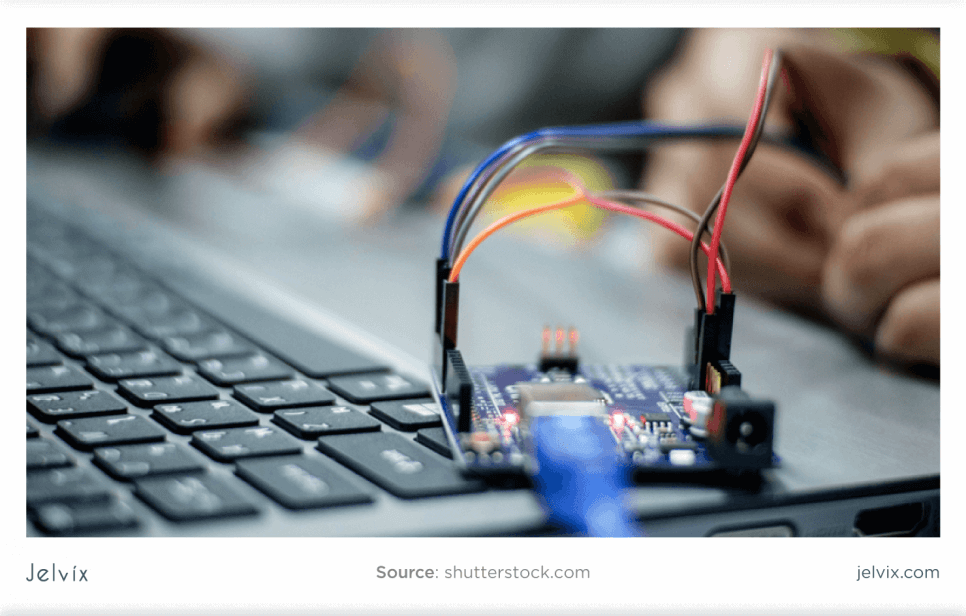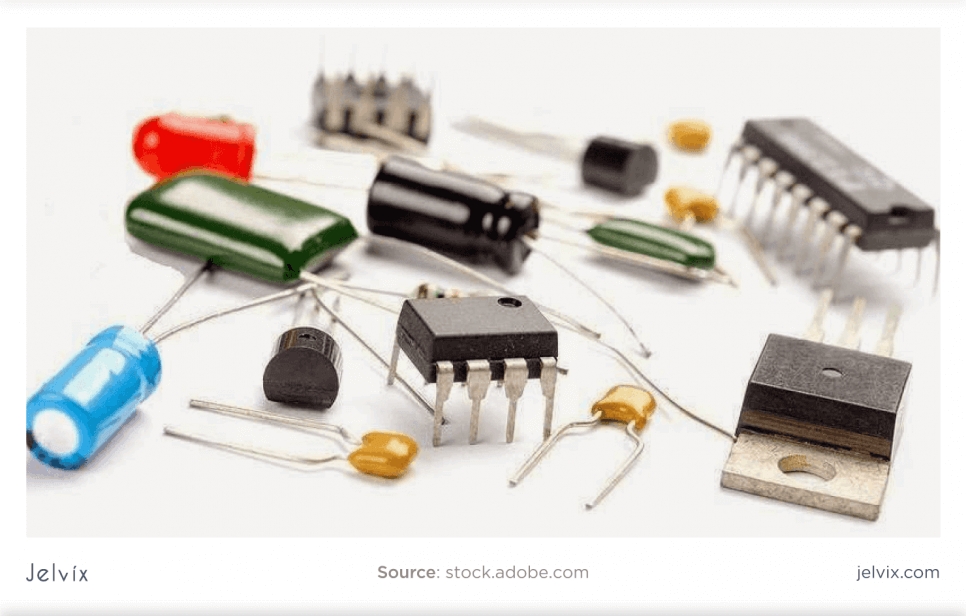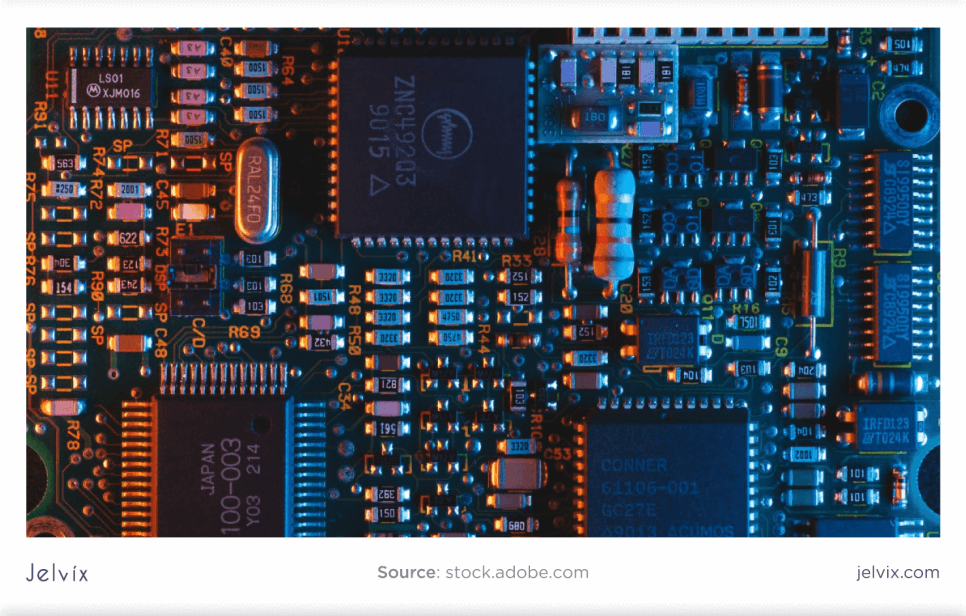Essentially, all digital devices around us involve embedded software. That applies to computer peripherals, household appliances, and critical systems, such as electronic control units in missile guidance systems or nuclear reactors.
It’s no wonder the embedded software market is so huge. According to the latest data, it will reach $137.5 billion by 2027. Increased request for solutions drives the explosive growth of various wearable devices, the Internet of Things, and connected vehicles.
Security, reliability, and resiliency are vital for devices that work with embedded systems. Thus, developing embedded software has its peculiarities. This article will walk you through the history, concept, and processes of building embedded software.
History of the Emergence of Embedded Systems
The first embedded software was written 50 years ago in Assembler using a set of deployment tools. Then developers had to write code from scratch through low-level programming, making an individual operating system (OS).
Over time, a real-time OS was developed that could work with embedded software solutions. This OS is still relevant for developing mission-critical applications such as industrial safety systems or printed circuit boards for surgical instruments.
Critical systems do not have enough programming in modern languages because of the system response delay. Thus, low-level programming and real-time OS continue to be used to develop solutions for many industrial areas. These dates illustrate the dynamics of the progression of embedded systems:
- 1960 – the Apollo navigation system by the first embedded system was created.
- 1968 – the first built-in system for a car was created.
- 1971 – the first microcontroller by Texas Instruments was presented.
- 1987 – the first embedded OS was released.
- 1990 – the Linux system was invented.
- 1996 – CE by Microsoft Windows was built.
What is Embedded System?
An Embedded System is a mix of software and computer hardware that performs a specific function or set of processes and is embedded in a device (excluding standard computer systems).
Embedded applications are software that lives inside a device to perform a particular set of functions, and they can be modified to bring varying levels of functionality. Specific embedded applications do not require an OS to manage them.
The variety of embedded systems does not allow creating a single specialized development platform. Moreover, embedded software is rarely a stand-alone product; instead, it is a separate element in a product consisting of electrical and electronics, mechanics, and software.
Embedded software engineering is the administration of embedded devices other than typical computers through software development.
What is embedded programming?
That term points out a particular type of programming that creates user or business devices that do not run on the traditional OS. This is the same as developing embedded software or embedded system programming for the hardware it will control and run on. Embedded systems design is vast, from microcircuits to large systems, such as magnetic resonance.
Dissimilarities between embedded software, firmware, and IoT
These terms represent different, albeit interrelated, concepts and are constantly confused with each other. Let us explain how they diverge from each other.
Firmware is a programming instruction drafted into the memory of a particular single-purpose electronic device, performing low-level functions. It is written in low-level languages and then converted into machine code so that the hardware on the device can read and execute it.
Formerly, this type of software was problematic or impossible to reprogram or update. Today, the firmware is stored in flash memory so that you can edit it. However, that is usually unnecessary since it is a permanent program for home appliances, computer components, and peripherals.
Embedded software, as firmware, is built for a peculiar device. The distinction is that embedded software written in high-level languages C++, Java, or Python is more complex and performs high-level functions such as processing data and interacting with other devices.
Embedded software requires a dedicated OS, while firmware can perform tasks without OS. The program files for the embedded software are stored in the file system of this unit and retrieved into RAM for execution.
An embedded system turns into an IoT device when you connect it to the Internet. So the IoT comprises a series of physical objects with firmware and network connectivity that can be updated and managed remotely. Nowadays, almost any object can become a connected device.
What are embedded programming languages?
Traditionally, the C and C ++ languages are used to develop software embedded on a hardware chip. Their significant benefits are accessing low-level system components, speed, and a small amount of memory consumed by compiled programs.
C# is a hybrid of structured and object-oriented programming. This option is also suitable for embedded solutions since programs written on C# can be compatible with various architectures.
Because of their speed and memory efficiency, assembly languages are preferred for low-resource systems because they translate code into machine code, which hardware can easily interpret.
Java is used to write portable and extensible embedded systems that can be ported to different platforms because of their WORA (Write once, run anywhere) functionality. These applications are compatible with many types of equipment.
It does not limit the list of suitable languages. Also, Verilog, Python, Java, Rust, JavaScript, Ada, Lua, Embedded C++, and others can be utilized for embedded development.
Concerning OS, there are plenty to choose from. For example, Windows CE, specifically designed to work with industrial controllers and automotive computers, plays a crucial role in powering various embedded systems. But as it gets old, Windows has replaced it with 10 IoT. We can also append the real-time OS ThreadX and Linux to this list – the traditional OS for smart devices.
What is the role of an embedded software developer?
Embedded software developers work in one of the most challenging technical and commercial environments; competition intensifies, and projects become more complex and difficult to complete. For example, high-performance mobile phones are currently being developed with sophisticated video and audio capabilities, including PDA-style functionality.
Consequently, experience with control systems, data structures, algorithms, and design patterns is critical for embedded software developers. In addition, an understanding of embedded software architecture and prototyping, hardware testing, firmware testing, and system integration is required.
Embedded programming is unique in that embedded dev must consider the constraints and hardware structure of the device. They need to know how hardware components work to create device-specific solutions. In addition, embedded projects require deep knowledge of programming languages, STL, and embedded Linux.
What is embedded software with examples?
There is no need to discover embedded systems use cases – they are all around you. We can find embedded devices and firmware in the washing machines, manufacturing plants, or communications equipment in any modern office. Here are some authentic examples of embedded software.
Automotive systems. The automotive industry constantly improves vehicle safety with advanced technology systems and sensors, which are impossible without embedded systems.
Medical equipment. Modern medical systems have built-in sensors to collect data related to patient health, such as heart and pulse rate, or implant readings, which are sent to the cloud, where a doctor can view patient data on their devices wirelessly.
GPS systems. Each receiver or device that is represented in the system has a module with built-in software.
Central heating systems. It is crucial to have thermostats to regulate the temperature, which is achieved by the built-in systems. Proper thermostat control will allow to adjust the temperature to a comfortable level and save significant energy.
Fitness trackers. They use built-in systems to collect heart rate, temperature, and step count data, then send to servers over a WAN, such as LTE or GPRS.
Distinctive Features of Embedded Software
As we mentioned above, embedded software is ubiquitous. Almost all devices and digital systems — from the simplest, such as toasters and remotes, to sophisticated tracking systems in missiles — are powered by embedded software. That also applies to the devices of the IoT, which are now at the height of popularity. But how does it differ from conventional application software? Distinctive features of the embedded software are:
- Compact form-factor. Embedded systems have a miniature size, making them portable and easy to mass-produce.
- Low energy consumption. Embedded devices do not require a lot of power to operate, which means you can use them anywhere. This feature also involves optimizing resources.
- High performance. Since the software performs a single task on a dedicated device, its implementation must be optimal for end-users.
Typology of embedded systems
Let’s find out more about the existing systems, which are classified according to various attributes.
Based on functional conditions:
- Standalone. Performs one or more elementary tasks separate from other systems.
- Mobile. Compact devices that work either independently or over a network.
- Networked. Requires a wired or wireless network to communicate with the server and other devices.
- Real-time. Performs tasks under specific time constraints.
Based on the type of microcontrollers:
- Small scale. Most often, these are parts of larger systems.
- Medium-scale. With more complicated hardware and software integration, and can operate independently.
- Complex. Realize complex functions.
Fundamental characteristics of the embedded system
- This type of system performs certain repetitive functions on specific devices within a short time frame.
- The system is based on microprocessors or microcontrollers.
- The embedded system can work without an OS or use special ones, for example, in real-time.
- The system can operate with limited power consumption, memory, and computing resources.
- Most often realized as a standalone device or as part of a more extensive system with which it interacts via the Internet, Bluetooth, or other link channels.
Embedded System Construction
We should note that any embedded system, whatever it may be, is an integration of the hardware and software layers. An embedded system diagram depicts common hardware and software elements.
Principal components of an embedded system
Each system comprises hardware, embedded software, and an OS to manage the software.
Built-in hardware
The hardware layer is built around the CPU, which is the primary system controller. It can be represented by:
- a microprocessor that contains only a central processing unit with a minimum amount of power to perform a straightforward operation;
- a microcontroller, a combination of processor, RAM / ROM I/O ports that can perform multiple tasks on a single chip.
Other built-in hardware items include:
- A sensor that measures and converts a physical quantity into an electrical signal can then be read by an embedded systems engineer or any electronic device. The measured value is stored in memory;
- An analog-to-digital converter that converts the analog signal from the sensor to a digital signal;
- The processor and ASIC that evaluate the data to measure the output and store it in memory;
- A digital to analog converter that converts digital data supplied by the processor to analog data;
- The drive compares the work produced by the DA converter with the actual stored output and stores the approved output.
We can integrate embedded hardware elements on a single board, making up a system on a chip (SoC). That provides more security and increases execution speed at the expense of a high-speed processor and memory. In addition, it is possible to use a more complex board – a system on a module, which integrates many microcircuits.
Embedded software
The software layer can contain different components depending on the complexity and purpose of the device. A complete package includes four parts:
- Firmware – written for specific hardware.
- Operating system – for setting rules and managing system resources. It includes device drivers equipped with APIs for software components to interact with pieces of hardware. It can be both general-purpose and real-time.
- Middleware is an intermediary that provides communication between the upper and lower layers of software. Middleware is created for a particular OS and sits between the OS and the app software.
- Application software that directly performs the functions of the system and interacts with end-users.
Complex embedded systems usually contain these components. In uncomplicated embedded solutions, some software parts, such as the OS, can be missing.
Embedded Product Development Lifecycle
The embedded software development life cycle follows the same stages as any other software.
- Necessity: this phase can be the starting point for new product development, re-engineering, or updating the current product.
- Concept: after performing the cost-benefit analysis, engineers move on to the project and risk management and other planning stages.
- Analysis: at this phase, developers clarify the business needs and the requirements for product development.
- Design: developers create a preliminary design document that establishes the overall product and design architecture.
- Development and testing: the product is embedded in actual hardware and software. Engineers test the product to see how it works and make changes if necessary.
- Deployment: the product owner deploys the embedded product to the market.
- Support: the team continues to support the product and make sure it works correctly.
- Update: improved versions of the product are being developed.
- Discard/recycle: an obsolete product that no longer meets the users is removed from the market.
Read more about the most common software development strategies and take a look at their benefits and drawbacks.
Embedded Software Development Issues
Given the complexity of this area of programming, embedded software companies face several fundamental challenges. Let’s look at the most relevant ones.
- Compatibility and integrity. Users should administer the application through a simple user interface across all channels, including over-the-air firmware updates, which require maximum ecosystem compatibility.
- Fault tolerance. Devices with embedded systems must be safe, and the system must avoid problems with vital functions in critical conditions.
- Stability. For devices that can be dangerous to the user and the lives of others, surprises are unacceptable. Therefore, when creating such systems, it is crucial to follow a standardized approach.
- Security. By 2025, the damage from cyberattacks will amount to about $10.5 trillion annually. That is why developers must take care of the security of every device at all levels: endpoint, gateway, cloud, etc.
- Speed. Because of the rapid development of the industry and the long lifespan of many devices, manufacturing hardware components containing firmware requires integration flexibility.
- Design limitations. The market is challenging developers to pack more computing power into smaller hardware.
The Latest Tendencies of the Embedded Software Industry
Over the past decade, there has been tremendous progress in methods, tools, and technologies for developing embedded systems. Microcontrollers with a clock frequency of over 1 GHz and over 4 megabytes for flash memory have already appeared, affecting the development of embedded systems. This significant increase in the capabilities of microcontrollers and their affordable cost will lead to a new design paradigm. But this is not all. Other factors will change the rules of the game in the next decade.
Fast speed and wireless connections
5G will transform embedded systems in different areas. In addition, 5G technology will have a more significant impact on portable medical devices, the IoT, telecommunications service providers, and the automotive industry, to name just a few. With 5G Internet, processors and systems will be super-fast, and quantum computing will also increase computation speed. We just need to wait for a few years.
Grand View Research predicts that the IoT market will gain $1 trillion by 2025, reflecting the tremendous growth in wireless connectivity and increased use of the IoT worldwide.
Python as a Dominant Language
Research from Northeastern University has found that the number of projects in the embedded space that have been programmed in Python has doubled in the past few years. Computing power has grown to where a stripped-down version of the Python kernel can be run on a microcontroller that only costs a few dollars. Popular open source ports for Python, such as MicroPython, are already available on over a dozen architectures.
Cybersecurity
Embedded security hardware and software are strengthening rapidly, and recent hardware developments mostly have an embedded security chip.
Affordable AI
We expect the embedded systems industry to grow with the widespread adoption of AI, IoT, deep and machine learning, and virtual and augmented reality. Intelligent embedded systems will help improve the security of embedded devices when connected to the cloud and reduce the overall power consumption of connected systems.
Final Words
Embedded software development is something that the path to innovation is impossible without. Therefore, it is a necessity for business and everyday life. And many technological developments promise substantial benefits in the coming years. To watch out for them, you may need a reliable partner to support your company along the way.
Jelvix proffers a range of services like developing custom embedded software from scratch and improving existing embedded software. In addition, our embedded software engineers are qualified to build embedded solutions for various niche industries where embedded software is used. Contact us to learn more about our projects and discuss the implementation of your idea. All information you provide will remain confidential as we sign a non-disclosure agreement that protects your sensitive data.
Need a qualified team of developers?
Unlock new business opportunities with the first-rate dedicated development team.


